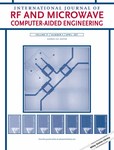Design of high gain Vivaldi antenna with a compound optical lens inspired by metamaterials
Funding information: Fundamental Research Funds for the Central Universities from China, Grant/Award Number: CCNU20GF006
Abstract
A kind of compound optical lens (COL) inspired by metamaterials whose unit cell is a closed symmetric S-type resonator (CSSR) is designed to enhance the gain and directivity of the antipodal Vivaldi antenna (AVA). COL, composed of a plano-convex lens and a double-convex lens, can generate a very narrow beam with a half-power beamwidth of 11.2° at 12 GHz. Traditional metamaterial lenses can only convert spherical waves into plane waves. Although the gain will increase, the beamwidth of the antenna is still very wide. COL can focus the plane wave transformed from the spherical wave, which makes the radiation beam extremely narrow. The proposed antenna has a −10 dB impedance bandwidth of 169.2% (1.0-12.0 GHz) and a −3 dB gain bandwidth of 133.3% (2.0-10.0 GHz) and a maximum gain enhancement of 5 dBi. The experimental results of the antennas agree with the simulation results. The proposed antenna is eventually a suitable candidate for wireless communications and radar applications.
Open Research
DATA AVAILABILITY STATEMENT
The data that support the findings of this study are available from the corresponding author upon reasonable request.




